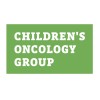
Rebeccamycin Analog in Treating Patients With Relapsed or Refractory Acute Myeloid Leukemia, Myelodysplastic...
Adult Acute Myeloid Leukemia With 11q23 (MLL) AbnormalitiesAdult Acute Myeloid Leukemia With Inv(16)(p13;q22)14 moreThis phase I trial is studying the side effects and best dose of rebeccamycin analog in treating patients with relapsed or refractory acute myeloid leukemia, myelodysplastic syndrome, acute lymphoblastic leukemia, or chronic myelogenous leukemia in blast phase. Drugs used in chemotherapy, such as rebeccamycin analog, work in different ways to stop cancer cells from dividing so they stop growing or die

Fludarabine and Rituximab With or Without Lenalidomide or Cyclophosphamide in Treating Patients...
Stage I Chronic Lymphocytic LeukemiaStage II Chronic Lymphocytic Leukemia2 moreThis randomized phase II trial studies how well fludarabine (fludarabine phosphate) and rituximab with or without lenalidomide or cyclophosphamide work in treating patients with symptomatic chronic lymphocytic leukemia. Drugs used in chemotherapy, such as fludarabine phosphate and cyclophosphamide, work in different ways to stop the growth of cancer cells, either by killing the cells, by stopping them from dividing, or by stopping them from spreading. Monoclonal antibodies, such as rituximab, may block cancer growth in different ways by targeting certain cells. Lenalidomide may stimulate the immune system in different ways and stop cancer cells from growing. Giving fludarabine phosphate and rituximab together with lenalidomide or cyclophosphamide may be an effective treatment for chronic lymphocytic leukemia.

Treatment of Acute Lymphoblastic Leukemia in Children
Acute Lymphoblastic LeukemiaThe purpose of this study is to reduce the side-effects from anti-leukemia therapy. The therapy in this study is based upon treatment information learned from prior clinical research programs as well as from laboratory research.

Fludarabine in Treating Patients With Chronic Lymphocytic Leukemia
LeukemiaRATIONALE: Drugs used in chemotherapy use different ways to stop cancer cells from dividing so they stop growing or die. PURPOSE: Phase II trial to study the effectiveness of fludarabine in treating patients who have chronic lymphocytic leukemia that has not been previously treated.

Haploidentical Donor Bone Marrow Transplant in Treating Patients With High-Risk Hematologic Cancer...
Accelerated Phase Chronic Myelogenous LeukemiaAdult Acute Lymphoblastic Leukemia in Remission95 moreThis phase II trial studies how well giving fludarabine phosphate, cyclophosphamide, tacrolimus, mycophenolate mofetil and total-body irradiation together with a donor bone marrow transplant works in treating patients with high-risk hematologic cancer. Giving low doses of chemotherapy, such as fludarabine phosphate and cyclophosphamide, and total-body irradiation before a donor bone marrow transplant helps stop the growth of cancer cells by stopping them from dividing or killing them. Giving cyclophosphamide after transplant may also stop the patient's immune system from rejecting the donor's bone marrow stem cells. The donated stem cells may replace the patient's immune system cells and help destroy any remaining cancer cells (graft-versus-tumor effect). Sometimes the transplanted cells from a donor can also make an immune response against the body's normal cells. Giving tacrolimus and mycophenolate mofetil after the transplant may stop this from happening

Combination Chemotherapy in Treating Young Patients With Newly Diagnosed Acute Lymphoblastic Leukemia...
Acute Lymphoblastic LeukemiaChildhood B Acute Lymphoblastic LeukemiaThis randomized phase III trial is studying different combination chemotherapy regimens and comparing how well they work in treating patients with newly diagnosed acute lymphoblastic leukemia. Drugs used in chemotherapy work in different ways to stop the growth of cancer cells, either by killing the cells or by stopping them from dividing. Giving more than one drug (combination chemotherapy) may kill more cancer cells.

Hu-Mik-beta1 to Treat T-Cell Large Granular Lymphocytic Leukemia
T-Cell Large Granular Lymphocytic LeukemiaLeukemia1 moreThis study will examine the use of the humanized Mik-beta-1 (Hu-Mik-beta1) antibody in patients with T-cell large granular lymphocytic leukemia (T-LGL). Patients with T-LGL often have reduced white blood cells, red blood cells, and platelets, and increased numbers of abnormal cells called large granular lymphocytes (LGLs). Patients may have recurrent infections, anemia, or abnormal bleeding. Hu-Mik-beta1 attaches to LGL cells and blocks the action of growth factors called interleukins that stimulate LGL growth. Blocking these interleukins may stop T-LGL leukemia cells from growing. This study will determine the dose and frequency of treatment with Hu-Mik-(SqrRoot) 1 that can safely be given to patients to coat the surface of their leukemic cells with antibody, determine how long the antibody lasts in the blood after injection, and examine the side effects and possible benefits of the drug in these patients. Patients age 18 or older with T-LGL may be eligible for this study. Candidates will be screened with a medical history and physical examination, review of pathology studies, skin biopsy, evaluation of rheumatoid arthritis if present, chest x-ray, computerized tomography (CT) scans and other imaging studies as needed, bone marrow biopsy, and blood and urine tests. Participants will receive a single dose of Hu-Mik-beta1 by a 90-minute infusion through a vein. Groups of patients will be treated with increasing doses (0.5, 1.0, and 1.5 mg/kg) of the antibody. Patients who develop serious drug side effects are taken off the study. The treatment requires a 3- to 4-day hospital stay. In addition to Hu-Mik-(SqrRoot) 1 treatment, patients will undergo the following tests and procedures: Collection of blood for 8 days following the dose of Hu-Mik-beta1 to measure blood levels of the antibody. Follow-up visits of 1 to 2 days at 22, 29, and 43 days after the dose of the antibody and then every 3 months for a total of 9 months. Bone marrow aspirate and biopsy if one has not been done within 6 weeks before entering the study, and a repeat biopsy if complete remission of T-LGL is achieved after completing treatment. For the biopsy, an area of the hip is numbed and a special needle is used to draw bone marrow from the hipbone. Imaging studies, such as chest x-ray and CT scan of the body after completing treatment if the screening scans showed abnormalities due to the T-LGL leukemia. Lymph node biopsy in individuals with enlarged superficial lymph nodes due to T-LGL leukemia to see if the treatment is reaching the leukemia in the lymph nodes. There may or may not be a direct benefit from participating in this study. However, the results may help in the treatment of future patients.

Genasense® (Oblimersen Sodium), Fludarabine, and Rituximab in Subjects With Chronic Lymphocytic...
Chronic Lymphocytic LeukemiaThe treatment combination of Rituxan® (rituximab) and fludarabine has previously been reported to produce a high percentage of responses with less toxicity than other combination treatments. However, some leukemia subjects continue to have leukemia despite treatment with these standard anticancer drug therapies, or they may work for only a short period of time. In some subjects, when the leukemia does not respond well to therapy the leukemia cells may be over-producing one or more proteins. One of these proteins is called Bcl-2. Bcl-2 is a protein that appears to protect cancer cells from being killed and thus lengthens the life of the cancer cells. Genasense® (oblimersen sodium) is a compound that blocks production of the Bcl-2 protein. By first lowering levels of Bcl-2, it is possible that chemotherapy drugs may work more effectively as a cancer treatment. Genasense® may also directly kill CLL cells. This study will test whether treating subjects with Genasense®, fludarabine and rituximab is safe and effective.

Decitabine and Valproic Acid in Treating Patients With Refractory or Relapsed Acute Myeloid Leukemia...
Adult Acute Myeloid Leukemia With 11q23 (MLL) AbnormalitiesAdult Acute Myeloid Leukemia With Del(5q)8 moreThis phase I trial is studying the side effects and best dose of decitabine and valproic acid in treating patients with refractory or relapsed acute myeloid leukemia or previously treated chronic lymphocytic leukemia or small lymphocytic leukemia. Drugs used in chemotherapy, such as decitabine, work in different ways to stop cancer cells from dividing so they stop growing or die. Valproic acid may stop the growth of cancer cells by blocking the enzymes necessary for their growth. Combining decitabine with valproic acid may kill more cancer cells.

Experimental Bone Marrow Transplant Protocol
Acute Lymphocytic LeukemiaChronic Myeloid Leukemia3 moreBone marrow transplantation (BMT) is a risky procedure. If doctors could reduce the complications, BMT would be safer to use for a wider range of conditions. The purposes of this study are to prevent graft rejection by increasing the amount of immunosuppression and by giving some lymphocytes from the donor before transplant; to prevent graft-versus-host disease (GVHD) by transplanting T-cell depleted stem cells; to improve the immune effect against residual leukemia by the add-back of donor lymphocytes before transplant and six or more weeks after transplant. Beyond the standard transplant protocol, study participants will undergo additional procedures. First, along with total body irradiation, patients will receive two drugs (a high dose of cyclophosphamide and fludarabine) to suppress immunity and prevent rejection of the transplant. Second, four days before the transplant, patients will be given donor lymphocytes that have been irradiated to make them incapable of causing GVHD. On the day of the transplant, patients will receive an infusion of T-cell depleted bone marrow stem cells. Finally, patients will receive two doses of add-back donor T-cells (45 and 100 days post transplant) and the immunosuppressive drug cyclosporine starting on day 44 until about six months after transplant. Study participants must be between the ages of 10 and 56 and have a family member who is a suitable stem cell donor match.
